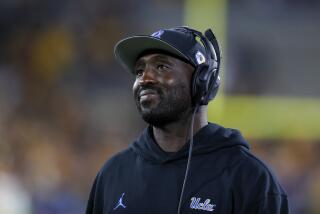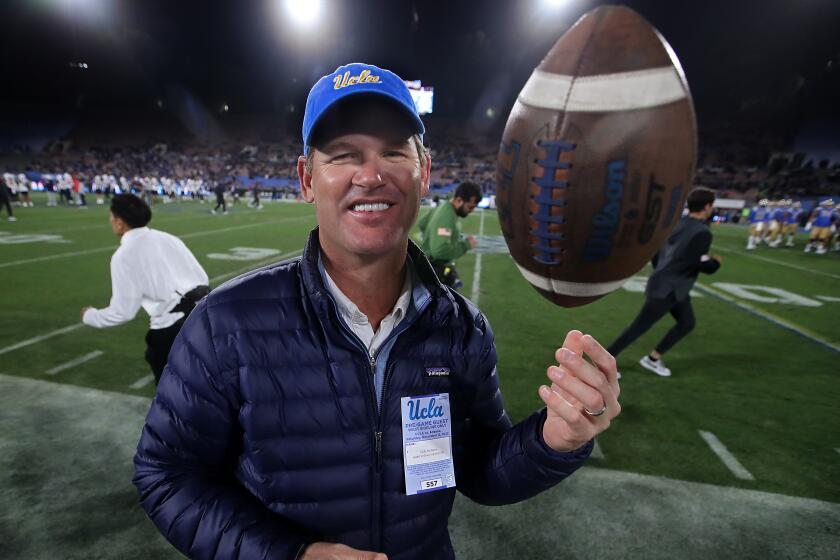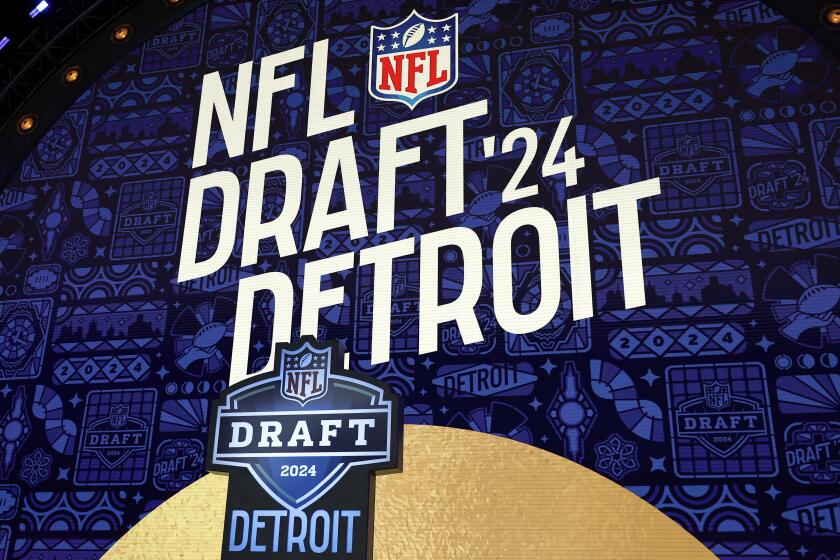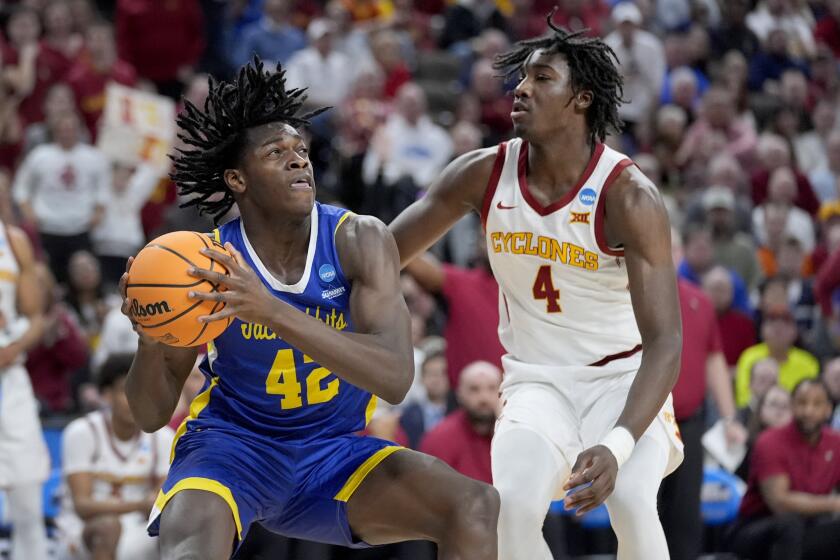UCLA is getting run over and is struggling to stop it

There may be no running from UCLA’s biggest problem.
Last season, it was running the ball. This season, it’s stopping the run.
Not that the Bruins are tremendous at running the ball through their first four games of 2017. They are tied for No. 103 in the nation with 120 yards rushing per game even after Soso Jamabo on Saturday became the first UCLA tailback in well over a year to rush for 100 yards in a game.
Stopping the run? The Bruins are open to suggestions. UCLA ranks last in the nation among 129 Football Bowl Subdivision teams after getting run over for 405 yards rushing during a 58-34 loss to Stanford at Stanford Stadium.
“I’ve never had that happen,” said Bruins defensive coordinator Tom Bradley, whose team is allowing an average of 307.5 yards rushing per game, “so I’m going to have to go back and take a good hard look at what we’re doing.”
One thing that UCLA hasn’t done much of is tackle well. Bradley suggested the team might consider changes to the way it practices because there’s not much tackling being done in the days before games.
“Obviously,” Bradley said, “we’re going to have to come up with a method to probably get that done.”
After some initial success, the Bruins repeatedly struggled to bring down Stanford running back Bryce Love, who roamed for 263 yards and a touchdown in 30 carries. Love had a capable running mate in Cameron Scarlett, who piled up 86 yards and three touchdowns in only eight carries.
Love averaged 8.8 yards per carry and broke off usual array of big runs, including ones that went for 69, 32, 30 and 27 yards. Scarlett sprinted for 62 yards on one run and Connor Weddington ran for 43 yards on a misdirection play.
“I can’t remember ever being around a run defense that gives up so many big plays in my career,” UCLA coach Jim Mora said after his most lopsided loss in seven defeats against Stanford. “It’s something we’ve worked really hard on.”
The Bruins are allowing 43.3 points per game, largely offsetting a prolific offense that is averaging 45 points per game and features the nation’s top-ranked passing attack that has generated an average of 451.8 yards per game through the air.
UCLA quarterback Josh Rosen said the offense was culpable for much of Stanford’s success because the Bruins turned the ball over four times, dropped what should have been a touchdown pass and repeatedly gave the Cardinal excellent field position. Stanford started three drives in UCLA territory following Bruins turnovers.
“We screwed our defense over multiple times,” said Rosen, who had two passes intercepted for a second consecutive week as part of an offense that has lost seven turnovers over its last two games. “I think in the first half they only really drove the field once.”
Bruins defensive end Jaelan Phillips appeared determined to spark a turnaround after sitting out against the Cardinal with an ankle injury.
“I swear to God im coming back with a vengeance that no one has seen before,” Phillips tweeted. “We’re not losing another game, I put that on everything I love.”
UCLA (2-2 overall, 0-1 Pac-12 Conference) will try to avoid falling below .500 when it faces Colorado (3-1, 0-1) on Saturday at the Rose Bowl. The Buffaloes are averaging a modest 141.5 yards rushing per game, but their defense remains stout, giving up only 16 points and 341.8 yards per game.
Seeing yellow
Add mental lapses to the list of issues confronting the Bruins.
Safety Jaleel Wadood extended a Stanford drive in the first quarter with a 15-yard unsportsmanlike conduct penalty after UCLA had stopped the Cardinal on third down. Safety Adarius Pickett was then ejected on Stanford’s next drive after being called for a targeting penalty.
Guard Najee Toran was twice called for chop blocks and cornerback Darnay Holmes helped Stanford convert a third down early in the fourth quarter when he was called for pass interference.
“You can’t play defense giving up big plays, you can’t have dumb penalties,” Bradley said. “We’re shooting ourselves all the time with some of the things.”
Off target?
Stanford also lost a player because of a targeting penalty when cornerback Alijah Holder was ejected in the third quarter. Mora said penalties that come on what appear to be routine plays have created confusion about how players are supposed to tackle.
“Their guy got ejected and our guy got ejected and I was standing right there for both of them and they were just football plays,” Mora said. “They were just simply football plays. That’s hard. … I do understand the emphasis on player safety and I am a proponent of it, but we have to find the right mix and I’m sure we will.”
Follow Ben Bolch on Twitter @latbbolch
More to Read
Go beyond the scoreboard
Get the latest on L.A.'s teams in the daily Sports Report newsletter.
You may occasionally receive promotional content from the Los Angeles Times.







